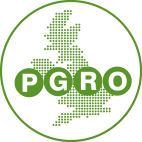Practice Abstract 12 - Developments that can influence European supply chains. Project deliverable 5.1. A summary of Chapter 2: The protein Challenge
Short title (native language):
Developments that can influence European supply chains. Project deliverable 5.1. A summary of Chapter 2: The protein Challenge
Short summary for practitioners (native language):
How to meet world population protein demand by 2050? Rising wealth and population increases pressure on agriculture to provide. Solutions lie in reduced protein consumption with less from meat.
Present policy impact: GATT agreements in 1962 drove large scale imports of soya into EU. Import tariffs for wheat were compensated by tariff free trade on substitutes –mostly soya. Cheap feed protein imports expanded EU intensive livestock production.
Regulations in 2017 banned pesticide use on Ecological Focus Area’s. This will negatively impact EU legumes reducing yields or by alternative EFA land use choices.
GM protein crops are not approved for cultivation in the EU. Asynchronous to crop production, GM importation requires un-authorised product segregation. Financial risks hamper trade. North & South American producers may focus on less regulated markets such as China, increasing EU sourcing problems. More EU grown non-GM soy, will increase EU livestock farmer costs, reducing competitiveness as cheaper GM soya will still be available internationally.
The biofuel blending mandate negatively affects legume production development. More land in rapeseed production for biodiesel, yields mid-protein coproduct used for animal feed.
The German Renewable Energy Act promotes maize for biogas. More land producing silage maize, increases competition for arable land, negatively affecting legume value chains.
The Dutch governments ‘Green Deal’ initiative facilitates sustainability developments by adjusting regulations, supporting negotiations, and/or helping companies enter foreign markets. A wide ranging scope includes the biobased economy. Initiatives like this may positively affect legume production development.



